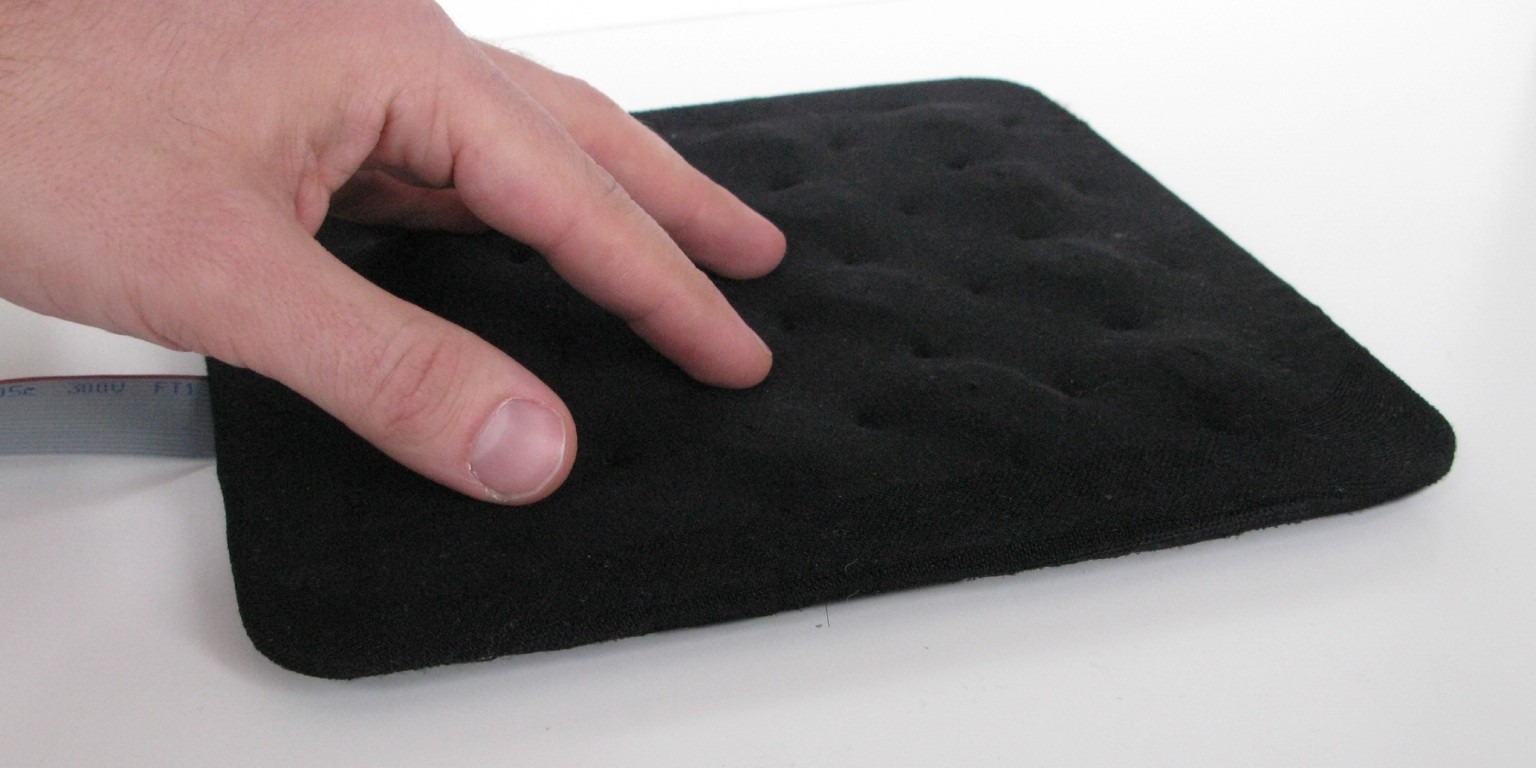Textile Display

We designed a new textile-based tactile display that provides active feedback through vibration, but also controls passive properties of a surface, such as shape and firmness, dynamically. It can be wrapped around a wide range of surfaces and objects. It consists of a matrix of custom-made electromagnetic actuators enclosed in stretchable fabric, with individually controllable cells.
How does it work?

The actuator consists of a coil sewn on a stretchable textile and a permanent neodymium magnet, glued on a second piece of textile. The two pieces of textile are then sewn together, opposing the magnetic poles of the coil and magnet.

When current is injected in the coil, the coil repels the magnet. The intensity of the current flowing through the coil sets the thickness of a unit. Once the stretchable textile reaches its maximum tension, the current then sets the firmness of the unit. Finally, modulating the current flowing through the coil over time generates vibrations of given modulation frequency. As a result, one actuator can provide three types of feedback: vibration, shape and firmness change.

Our textile-based actuators can be easily wrapped around objects and devices, or laid onto a wide range of surfaces. It can provide active feedback, grabbing the user’s attention. For example, when a mobile phone is connected, it could create different vibration patterns to notify the user of a new message received or an incoming call. It can also provide dynamic passive-feedback through shape and firmness changes. For example, it could notify the user of slowly changing information, such as battery level, or the download status of a file, through passive properties of the display without interrupting the user. Electro-permanent magnets could replace the coils to limit the electrical current consumption of an actuator. These magnets require a current impulse to change polarization, instead of constant current flow.
Publications
BubbleWrap: A Textile-Based Electromagnetic Haptic Display.
O. Bau, U. Petrevski and W. Mackay. 2009. In CHI ’09 EA. ACM. [ACM]
Team and Credits
This project was developed in collaboration with Uros Petrevski in 2009. Illustrations by Mathieu Peyroulet-Ghilini. Sewing supervision by Ermenegilda Bau.